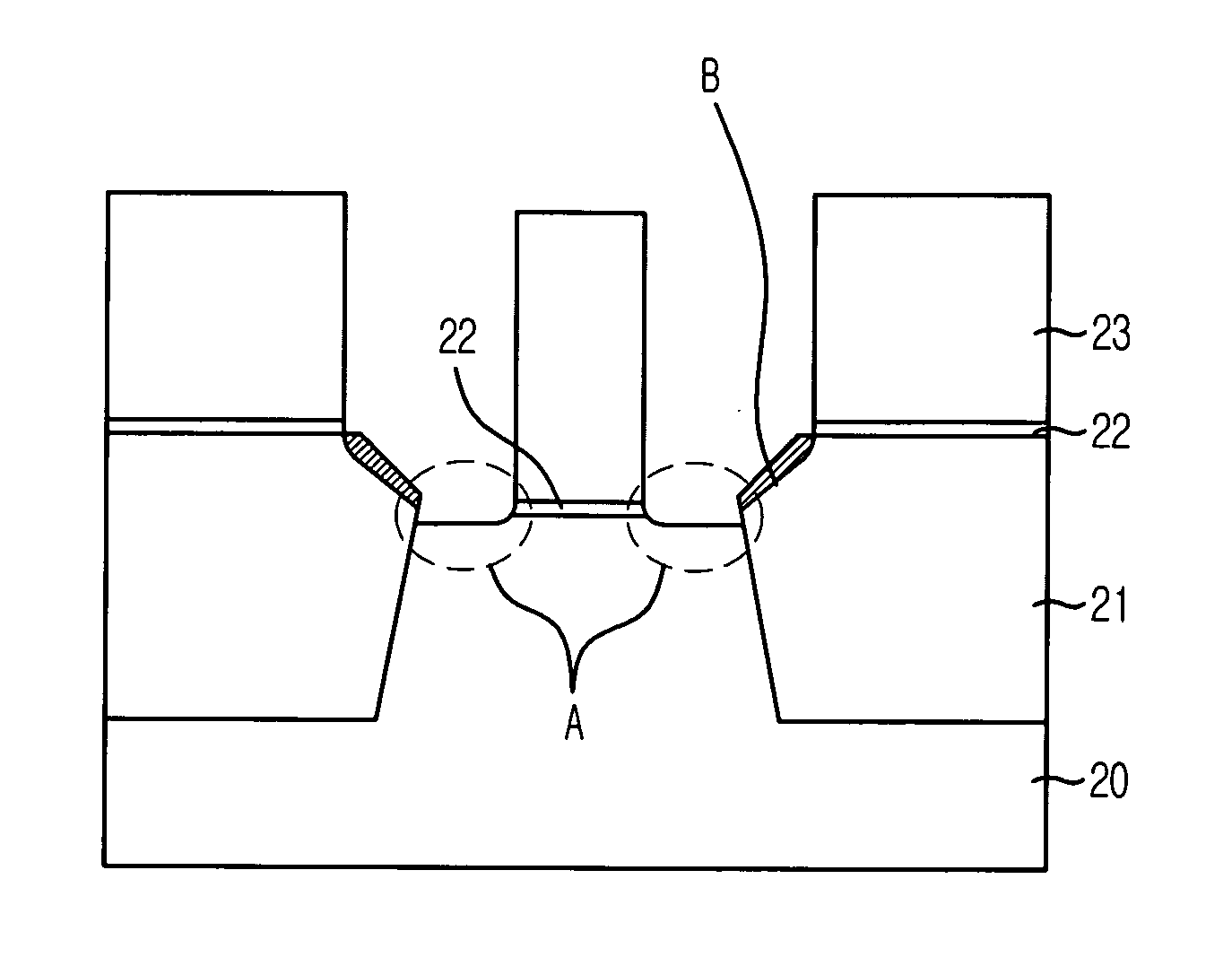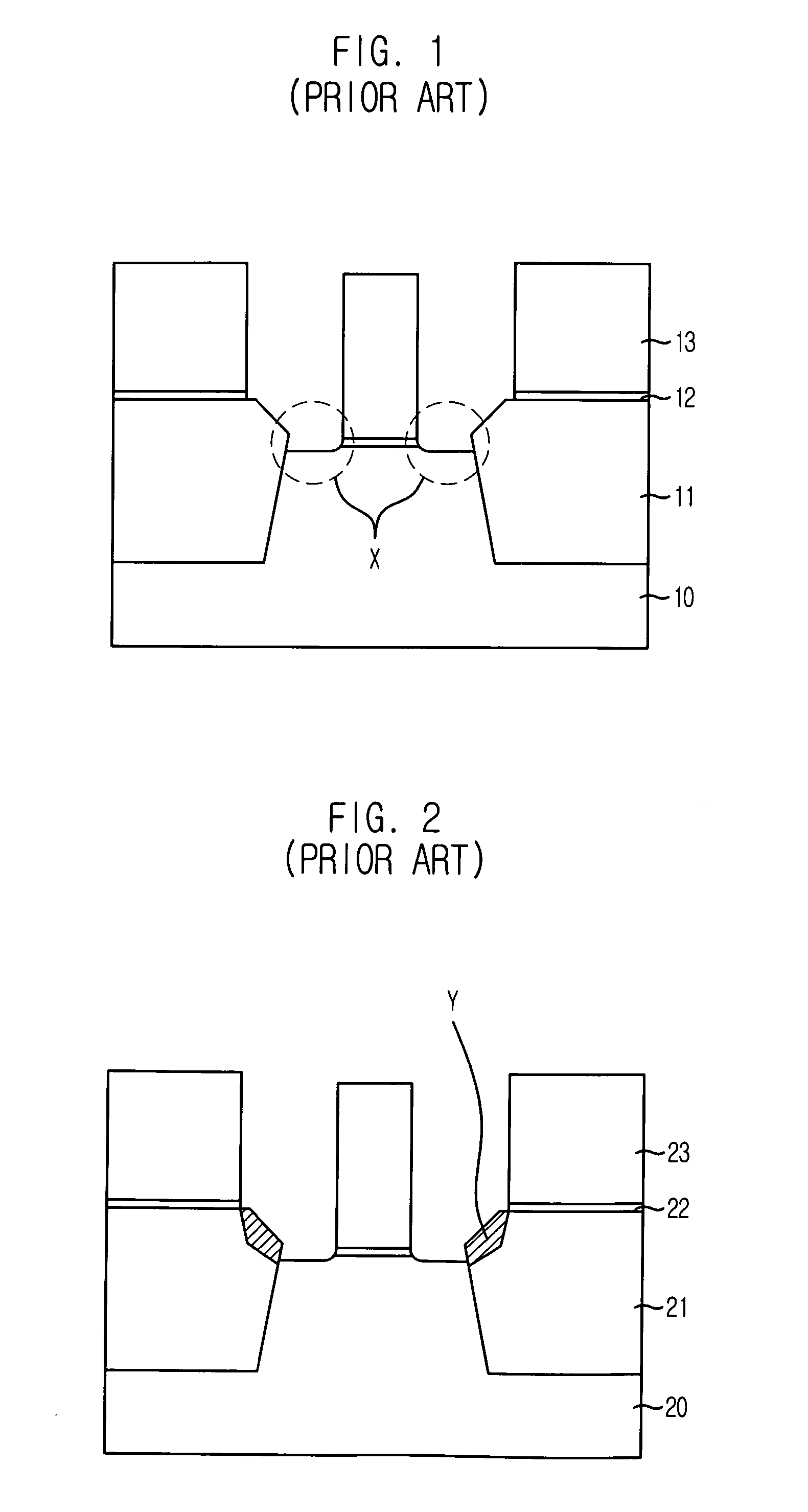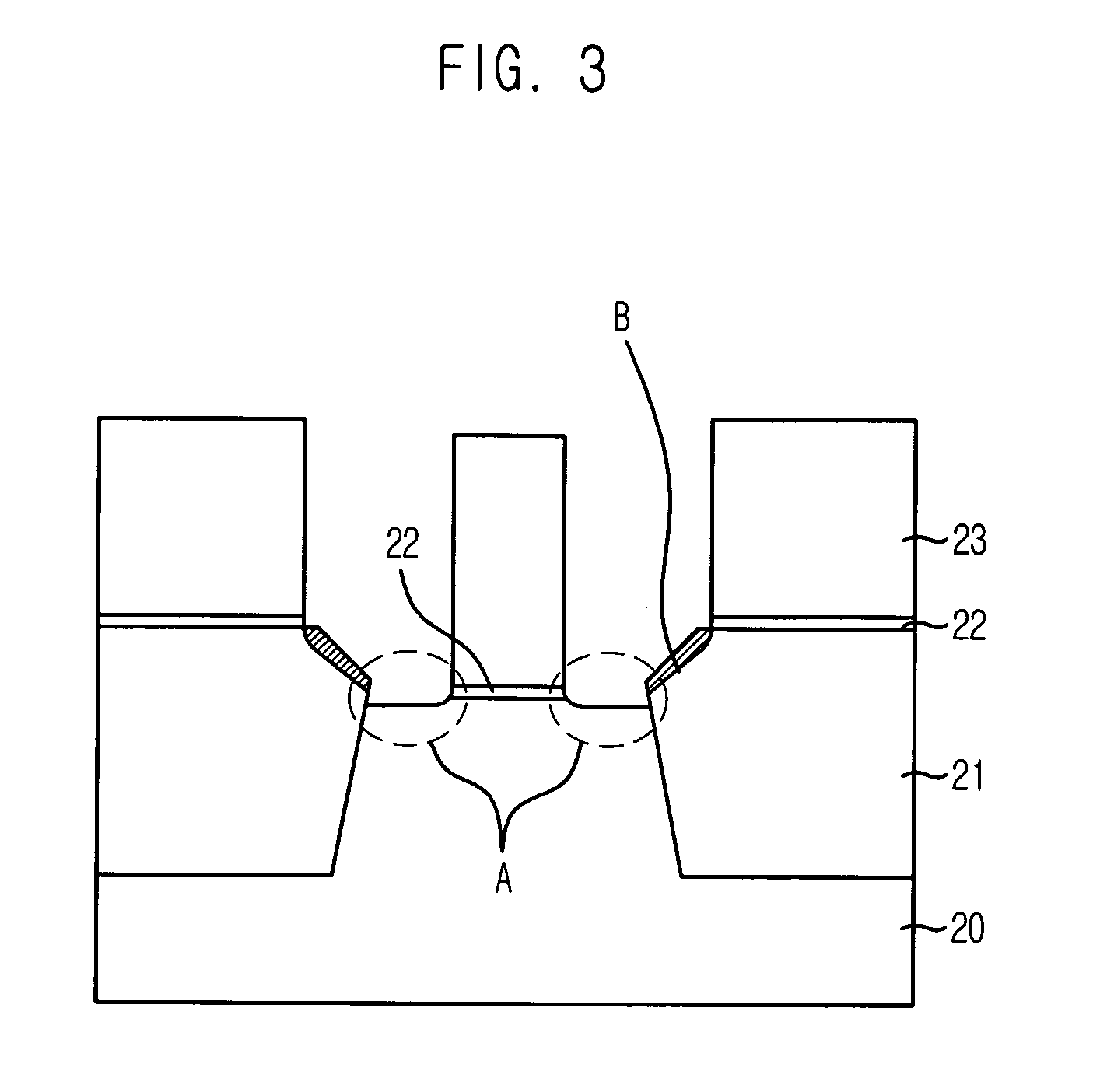Method for fabricating semiconductor device
- Summary
- Abstract
- Description
- Claims
- Application Information
AI Technical Summary
Benefits of technology
Problems solved by technology
Method used
Image
Examples
Embodiment Construction
[0025] Hereinafter, detailed descriptions on preferred embodiments of the present invention will be provided with reference to the accompanying drawings.
[0026]FIG. 3 is a cross-sectional view illustrating a method for fabricating a semiconductor device in accordance with a specific embodiment of the present invention. It should be noted that the same reference numerals are used for the same elements described in FIG. 2.
[0027] Referring to FIG. 3, first, a plurality of predetermined trench regions are formed on a substrate 20 and then, the trench regions are filled with an insulation layer, thereby forming shallow trench isolation (STI) type device isolation layers 21. The device isolation layers 21 include an oxide layer using high density plasma (HDP).
[0028] An anti-reflective coating layer 22 and a photoresist layer 23 are deposited on an entire surface of the substrate 20.
[0029] In a chamber used for patterning an oxide layer, the anti-reflective coating layer 22 and the phot...
PUM
 Login to View More
Login to View More Abstract
Description
Claims
Application Information
 Login to View More
Login to View More - R&D
- Intellectual Property
- Life Sciences
- Materials
- Tech Scout
- Unparalleled Data Quality
- Higher Quality Content
- 60% Fewer Hallucinations
Browse by: Latest US Patents, China's latest patents, Technical Efficacy Thesaurus, Application Domain, Technology Topic, Popular Technical Reports.
© 2025 PatSnap. All rights reserved.Legal|Privacy policy|Modern Slavery Act Transparency Statement|Sitemap|About US| Contact US: help@patsnap.com



